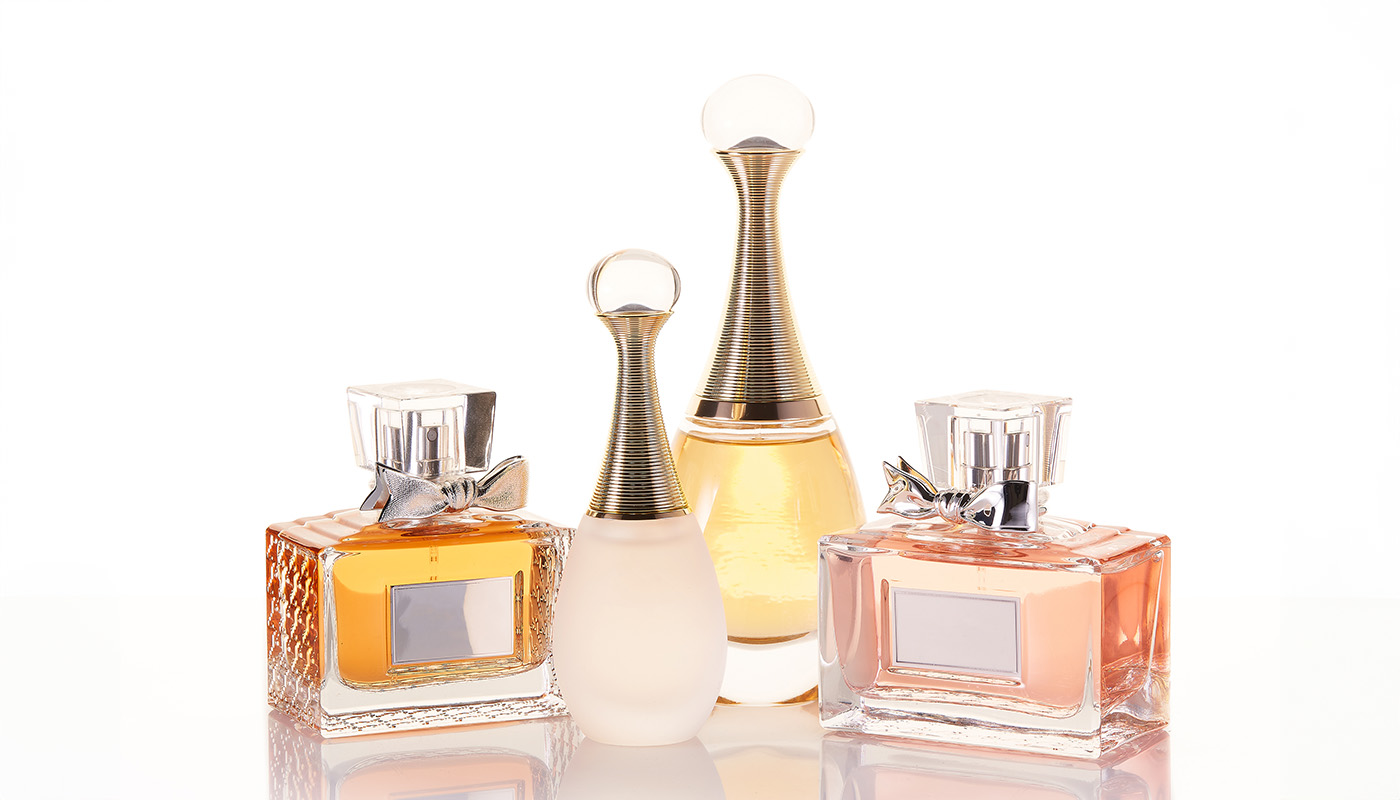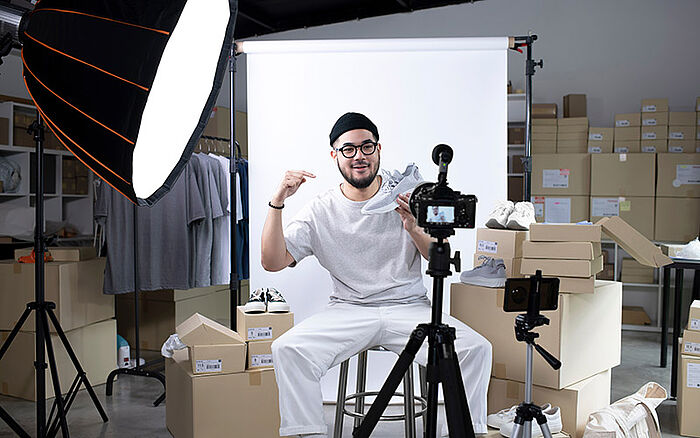
The thin line between fake and fine
At a time when artificial intelligence (AI) is creating handbags, where "dupes" blur the lines between inspiration and imitation and where counterfeit goods appear on social networks like ordinary stories, how can luxury brands still safeguard their identity?
In an interview originally published by Journal du Luxe on March 18, 2025, Frédéric Blanc, Managing Director at Dennemeyer & Associates France, sheds light on an ongoing legal battle encompassing iconic creations, digital pitfalls and technological revolutions, offering a crucial perspective on the new front lines of luxury under pressure.
Why is the protection of trademarks, designs and patents crucial in the world of luxury?
Luxury is based on a unique alchemy of exclusivity, know-how and cultural heritage. Legal protection is essential to ensure the integrity of this heritage and to preserve the identity of luxury brands. Without Intellectual Property (IP) rights, a brand could risk losing its uniqueness, leaving the field open for third parties to capitalize on its creations, be they logos, signature patterns, designs or even fragrances.
Luxury icons such as the Chanel N°5 bottle or the Hermès Birkin bag are not merely objects but symbols deeply rooted in the collective imagination. Protecting them not only preserves their value but also controls how they are perceived in the market. Today, with the rise of digital technology and the increasing sophistication of copies, the fight against counterfeiting and wrongful appropriation is becoming more complex. We are now witnessing a shift in challenges: Counterfeits are no longer limited to low-quality products but now seek to replicate perfectly the luxury experience to the extent of deceiving even discerning consumers. This requires luxury brands to be more vigilant and to strengthen their protection strategies, both internally and through specialized lawyers, industrial property consultants and investigators working on-site and online.
What are the biggest IP challenges facing luxury brands today?
The counterfeit market has long been a challenge for luxury brands, but it is constantly evolving and becoming more complex with globalization and digital transformation. While some countries like China, India and Turkey have strengthened their legislation to comply with international standards, local economic realities and the scale of counterfeit production networks hinder the complete eradication of the phenomenon.
In addition, the rise of e-commerce and digital platforms has significantly expanded clandestine distribution channels. Counterfeiting is no longer limited to physical markets. Today, sophisticated copies are being circulated around online marketplaces and via social media, making detection and enforcement increasingly complex. Luxury brands must, therefore, be highly responsive in identifying these illegal sales and taking swift legal action.

According to research commissioned by the United Kingdom Intellectual Property Office, men are more than twice as likely as women to purchase counterfeit goods endorsed by social media influencers (24% of the surveyed population vis-à-vis 10%).
Another major challenge is protecting brands against wrongful appropriation, including by other companies. The legal dispute between Chanel and Huawei over a logo deemed too similar highlights these growing tensions. Similarly, the Hermès case against the artist behind the "MetaBirkin" non-fungible tokens (NFTs) demonstrates how new technologies are paving the way for novel forms of IP infringement.
In response to these challenges, brands are adopting more offensive strategies, such as taking legal action against those leasing premises where counterfeit goods are sold or against digital platforms hosting these illicit sales, in order to dry up fraudulent distribution channels. The challenge is twofold: strengthening legislative frameworks and adapting to market changes to protect their intangible assets effectively.
What impact will the European "design package" reform have on the protection strategies of luxury brands?
This reform aims to modernize and unify the protection of designs and models in Europe, which was previously fragmented, to encourage economic operators to register their designs and safeguard their creations. Until now, one of the major obstacles to using these protections has been the difficulty in enforcing them against counterfeiters who slightly modify a design to bypass the rights.
With these new regulations, companies will be able to protect their creations better by filing not only fixed 2D or 3D forms but also dynamic representations in the form of videos or animations. This development will provide a better understanding of the reality of contemporary design, where the perception of a product is no longer limited to a static image but is also based on its uses and interaction with its environment.
Luxury brands will undoubtedly have to incorporate this new arsenal into their protection strategies to ensure their creations are defended more effectively.
How can luxury brands protect themselves against the phenomenon of "dupes?"
Unlike counterfeits, these products do not directly copy a protected logo, name or design but instead clearly reproduce the aesthetic and essence of an iconic product at a lower cost to attract customers drawn by its image.

An added difficulty in tackling fashion industry dupes is where to set the bar for infringement. If an interpretation is too lenient, designers will see their work copied without remuneration; if it is too strict, mid-market alternative products could be caught in the crossfire.
While these practices do not immediately qualify as counterfeiting, they nonetheless pose a significant threat to the integrity of luxury brands. Allowing these imitations to proliferate risks trivializing a creation, diminishing its perceived exclusivity and, ultimately, diluting the brand's value.
To protect themselves, luxury brands must prove that the original product or some of its distinctive features have been copied to the point of confusing the consumer. The key argument is that these "dupes" are not a mere creative coincidence but rather a deliberate strategy to take advantage of a product's reputation while circumventing legal penalties.
Taking legal action against unfair competition and parasitism is also an effective strategy as it makes it possible to demonstrate that such practices undermine the principles of commercial fairness. A proactive legal strategy can yield results, as demonstrated by LVMH in 2021. The group won a major case against a Chinese company selling "lookalike" handbags resembling Louis Vuitton designs. The court recognized the distinctiveness and reputation of the brand, thereby limiting the spread of these imitations.
What will be the major legal challenges for the luxury industry in the coming years?
The rise of AI raises new questions about IP. If AI creates a design or a work of art, who holds the rights to it? The human creator, the company that provided the instructions or the algorithm itself? The consensus in copyright and patent case law is to exclude AI from owning or generating IP – since these systems are neither natural nor legal persons – and protect only significant contributions made by human artists or inventors, as afforded to their assignees. Trademark and design law, in comparison, are more focused on an asset, its impression and commercial purpose than on the process that developed it. However, legislation still needs to adapt to these new realities to remove lingering ambiguities.
Another major issue is 3D printing. The democratization of this technology would make it possible to reproduce luxury goods with unparalleled precision. Luxury brands will need to anticipate this risk by strengthening their legal protections and adapting their anti-counterfeiting strategies to these new manufacturing methods.

Phase 1 of the European design reform package came into effect on May 1, 2025, addressing the issue of 3D printing directly. Now, "creating, downloading, copying and sharing or distributing to others any medium or software which records the design for the purpose of enabling [an infringing product] to be made" is prohibited.
In this context, brands must not only protect their assets but also innovate in areas like traceability and authentication, such as by integrating blockchain technology to secure the origin and provenance of their products.
What advice would you give to young creators to understand their IP better?
I recommend incorporating IP from the very beginning of a project's development, including it in the business plan and carefully considering an appropriate strategy. Given that IP law is complex and varies from one jurisdiction to another, surrounding yourself with experts is a key step in avoiding strategic errors and optimizing protection. Working with specialized lawyers, IP consultants or mentors allows for a proactive approach and provides a clear understanding of the challenges at each stage of development.
At Dennemeyer & Associates, we actively support young creators and startups in this process. As a dedicated partner of ESSEC and CentraleSupélec, we provide guidance to incubated projects on their IP needs and protection strategies. Thanks to our collaboration with Station F, we are also on site once a month to offer free consultations to entrepreneurs. Our role is to educate and raise awareness among creators about the IP challenges throughout the life cycle of their business.
Finally, we encourage young talents to participate in our IP-focused events, which are excellent opportunities to ask questions, chat with experts and gain a deeper understanding of the protection mechanisms suited to their project.
Editor's note: This translated interview has been edited for context.
Filed in

International brand owners in China need to be aware of new measures to address the abuse of the trademark system



